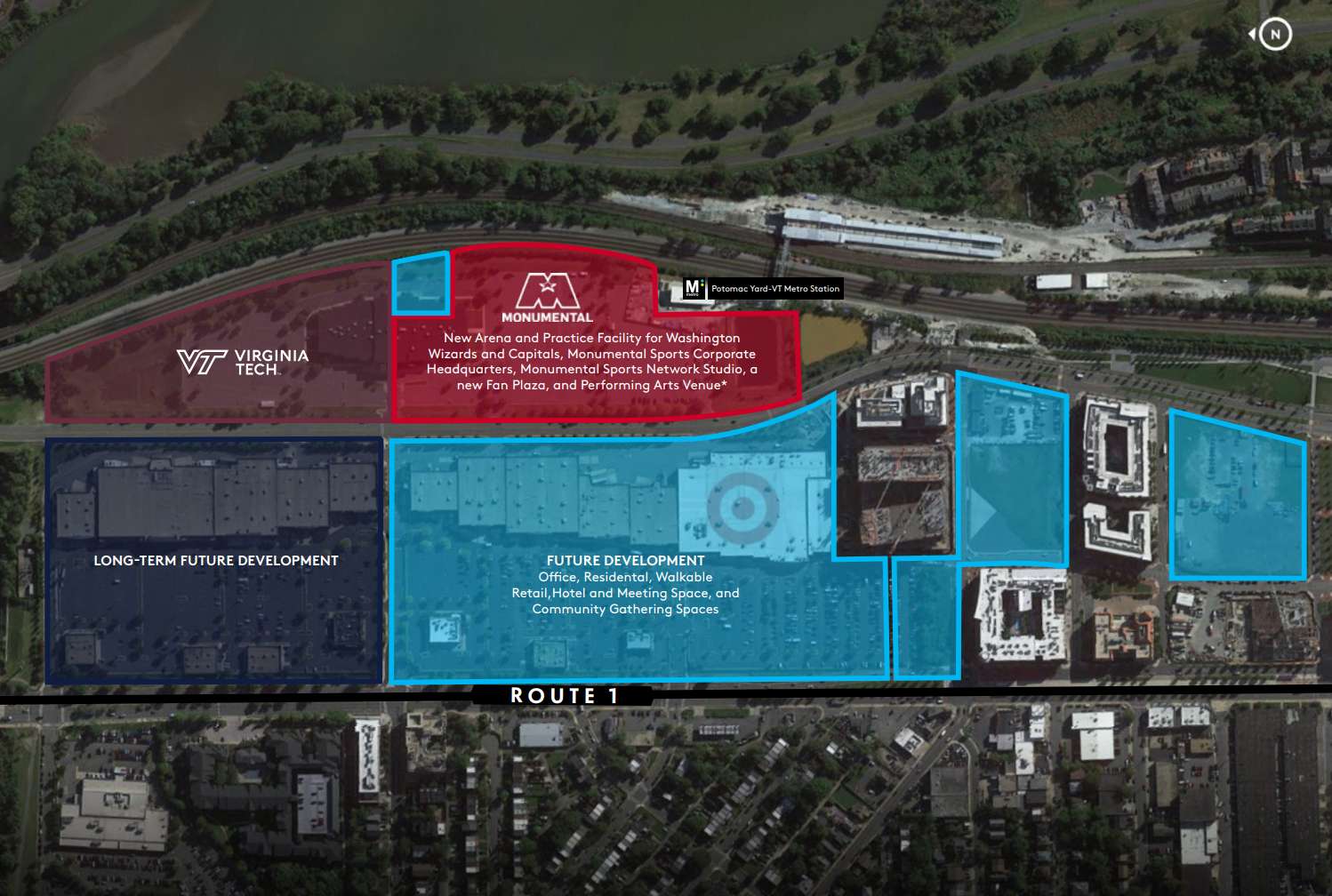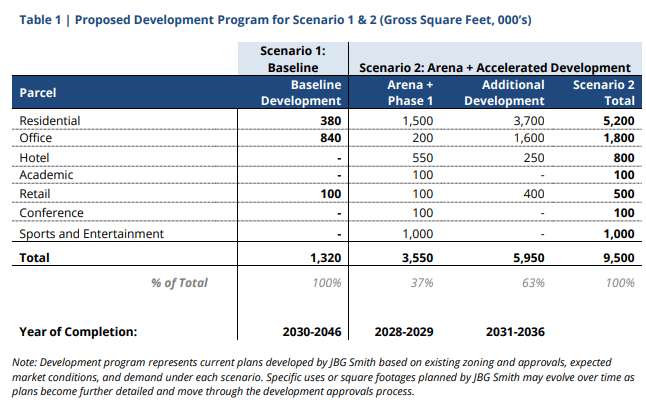
The Alexandria Economic Development Partnership (AEDP) released a summary of an economic impact report for the new Potomac Yard arena, but so far, much of the online reception has been skeptical.
AEDP hired HR&A Advisors to write an economic impact report in June. The full report has not been released, but AEDP released a summary of the report last week.
According to the summary:
Key takeaways from this analysis are provided here, with additional detail on methodology and findings provided in the sections below.
- Development of an entertainment district would generate approximately 30,000 permanent jobs for the Commonwealth of Virginia.
- An entertainment district is projected to generate roughly 2.5 times the economic output of what would otherwise be built based on current development plans.

Terry Clower, professor of public policy in the Schar School of Policy and Government at George Mason University, told ALXnow the project would likely be a “spectacular amenity for the City of Alexandria,” though Clower said it remains to be seen whether the new development will bring new economic investment to the region or just cannibalize development from the Gallery Place arena.
However, other Alexandrians are skeptical about the economic benefits of the project. Several concerns were raised about the summary, both in the comments on this site and across social media.
The summary said HR&A Advisors used the IMPLAN input-output economic impact modeling tool to analyze the project’s economic impacts.
IMPLAN is frequently used in economic impact studies, though it’s also come under fire in the past as a model that only shows benefits to a potential project rather than the total economic impacts.
Another issue raised multiple times was that, while the study was independent, there are accusations of bias due to the study being paid for by AEDP. One of AEDP’s board members, AJ Jackson, is executive vice president of JBG Smith, the real estate investment trust that would develop the site.
Of note: AEDP has also not released the full analysis, only a summary of information from the report, and no date has been set for a release of the full report.
Again, reports commissioned by people who want to spend tax dollars on a stadium are not "studies," they are PR documents. Actual economic studies have demonstrated time and again that stadiums do not spur economic development are bad public investments. There are no exceptions. https://t.co/C0IXxq6gO0 pic.twitter.com/ceMrjJpNID
— J.C. Bradbury (@jc_bradbury) December 26, 2023
We’re working on it now, but would like to take some time away for everyone to enjoy their holidays, including you and your family. We’ll expect to be in touch after the holidays.
We’d also like the full impact analysis to be published ASAP.
— S (@sc7128) December 24, 2023
Yes —That's essentially the response that several people have received from him when they asked that question. The teams should stay in DC and we should look at other ways to redevelop PY.https://t.co/cLWs6KlADo
— Environmental Council of Alexandria Virginia (ECA) (@EcaAlexandria) December 25, 2023
The economic arguments over the Potomac Yard arena are, in part, tied in with broader questions about the impact of sports stadiums on local economies.
While a portion of the funding will come from Ted Leonsis — a $400 million downpayment — the City of Alexandria and the Commonwealth of Virginia are funding the project through the same tax mechanism that paid for the Potomac Yard Metro station. The city and the state are taking out debt on the project to be paid off in revenue from the project.
Stadiums are almost always bad investments for cities, with some reports showing stadiums don’t bring in the jobs or tourist revenue claimed.
“There are a lot of bad stadium deals around the country,” Mayor Justin Wilson said. “That’s why, when we went into this discussion, we had to have private money in this… A public-private partnership should not be entirely public. There are stadium deals around the country, even in this region, that have been entirely public. We, as we went through this process, tried to ensure that we learned the lessons of those failed deals.”
The Potomac Yard arena faces challenges in more than just economic analysis though: one of the biggest questions is how to handle transportation demands at the arena.
Wilson said the city would deliberately keeping parking levels low at the site to discourage car traffic, but Wilson and Metro General Manager Randy Clarke both said the Potomac Yard Metro station doesn’t have the capacity to handle sports arena traffic.

